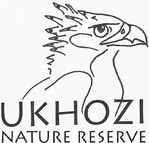
Frequently Asked Questions
What am I most likely to see?
Being an untamed wildlife area, there’s always a lot of luck involved in what wildlife will be seen on a visit. The famous big five – lion, leopard, rhino, elephant and buffalo – can all be found on the reserve – but not everyone gets lucky all of the time. We assure you sightings of impala, giraffe, kudu, zebra and the odd wildebeest… the rest is just happenstance! But animals are not what it's all about, there are ample birds, insects, grasses, geology and fauna and flora to spark your interest.
What is the weather like?
Ukhozi has a subtropical climate, with hot and humid summers (40 Celsius/104 Fahrenheit), and dry winters (17-22 Celsius/60-70 Fahrenheit). We have summer rains which fall between October and April. Temperatures can be as low as 4 Celsius and high as 44 degrees. UV levels can be extreme.
How do you get to Ukhozi?
Your transport will be arranged for you. It takes 6 hours by vehicle from Johannesburg and about 1 and a half hours by plane. Eastgate and Phalaborwa Airports are about an hour’s drive from the Reserve.
Are there medical facilities?
The staff are trained for basic first aid and the nearest hospital is approximately one and a half hours’ drive. The nearest doctor is 45 minutes away.
What about anti-malaria tablets?
The reserve is a malaria-controlled area, with a low risk, but we suggest you speak to your doctor about taking malaria prevention tablets. Mosquito nets and repellents are supplied in each room.
Is there an emergency contact?
River camp has a landline which can be used as an emergency contact point. The phone number will be given out on request.
Is there mobile phone signal?
Signal throughout the farm is limited, however we have identified reliable signal areas near each camp which can be used as needed.
What should I pack?
- Light and informal summer clothing.
- A warm jumper (winter night drives, during April to August, can get chilly – temperatures can drop from a daytime high of 30 down to less than 6 degrees at night – layering of clothes becomes essential).
- A lightweight waterproof jacket, if your visit is between September and March.
- A good pair of walking shoes. You might also like to pack a pair of sandals for around the lodge or pool.
- A hat. Preferably one that has a wide brim to shade your eyes and the back of your neck.
- Sunscreen. Choose a sunscreen with a high SPF or sun protection factor of between 30 and 50.
- A swimming costume.
- A camera.
- A good pair of binoculars.
